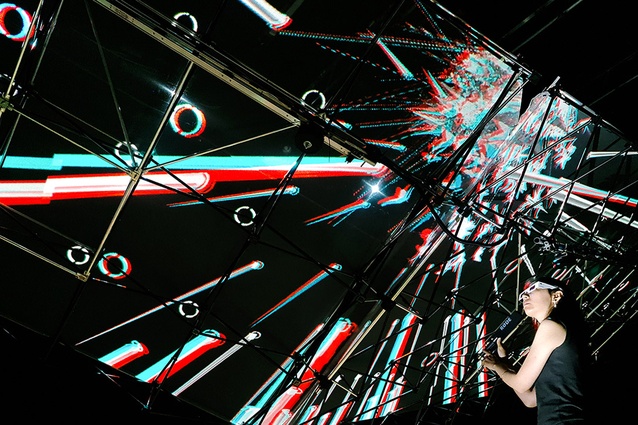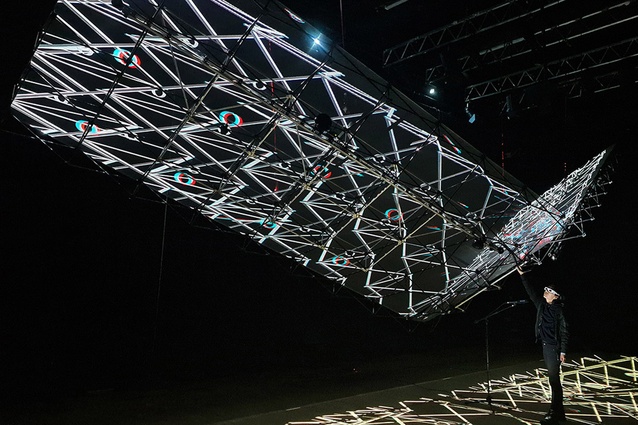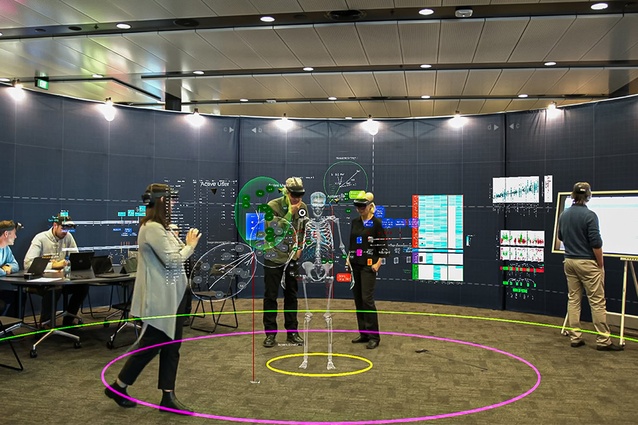Ars Electronica Garden Aotearoa exhibition in Wellington
After moving to an online exhibition in 2020 and 2021 due to lockdown, Ars Electronica Garden Aotearoa is open to the public in a physical exhibition for the first time, in Wellington until the 22nd of June.
In the exhibition at Te Herenga Waka, Victoria University of Wellington, visitors will see and experience immersive, interactive, virtual and mixed realities created by researchers, designers, scientists and artists from across Aotearoa New Zealand. This, the first physical exhibition of Ars Electronica Garden Aotearoa features around 15 installations as well as performances, demonstrations and talks.
Installations from the University of Auckland include LightSense, a collaboration between the arc/sec Lab, the Augmented Human Lab and the Empathic Computing Lab at the Auckland Bioengineering Institute (ABI), and the New Dexterity Group in the University’s Faculty of Engineering.
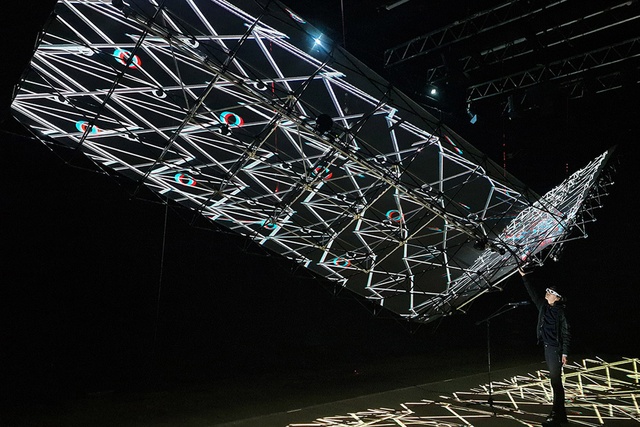
In this, a large-scale kinetic lightweight structure (12m x 3m) is combined with holographic, digital animations, and an integrated AI system that has been trained with 60,000 poems to lead and sustain conversations with visitors. It then responds to the emotional tenor of the conversation by changing shape, immersing visitors in Pavilions of Love, Anger, Curiosity and Joy.
The XR Tumour Project meanwhile, immerses visitors in the data of a cancer patient in an interactive extended reality (XR) setting, an ‘arena’ that combines physical architecture with digital clinical information.
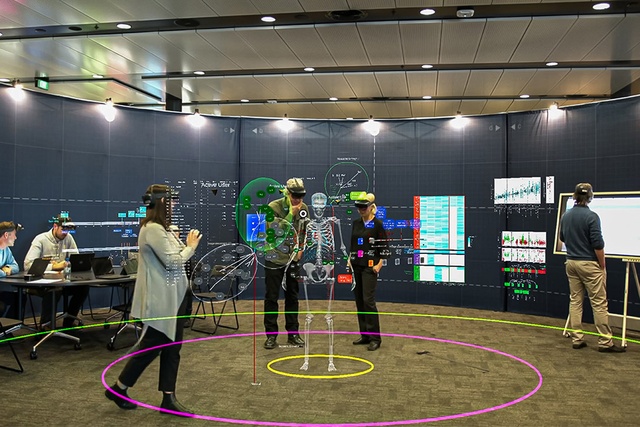
Also featured in Garden Aotearoa is Maritime_Trace_Exposure, an interactive narrative from the artist group An Architecture of the Sea, co-founded by Dr Mizuho Nishioka and Tane Moleta from the Wellington Faculty of Architecture and Design Innovation, who co-create with fellow researchers and experienced artists Wayne Barrar and Dr Kerry Hines.
Maritime_Trace_Exposure uses photography, poetry, and virtual space to create a maritime space through simulations and imagining technologies. One part of the work examines both real and artificial fish scales and questions the concepts of ‘real’ and ‘virtual’, while another combines subterranean landform data and streaming weather patterns to create a new virtual landscape.
Find out more about the schedule of events at Ars Electronica Garden Aotearoa 2022, on 16–22 June at Herenga Waka, Victoria University of Wellington.

